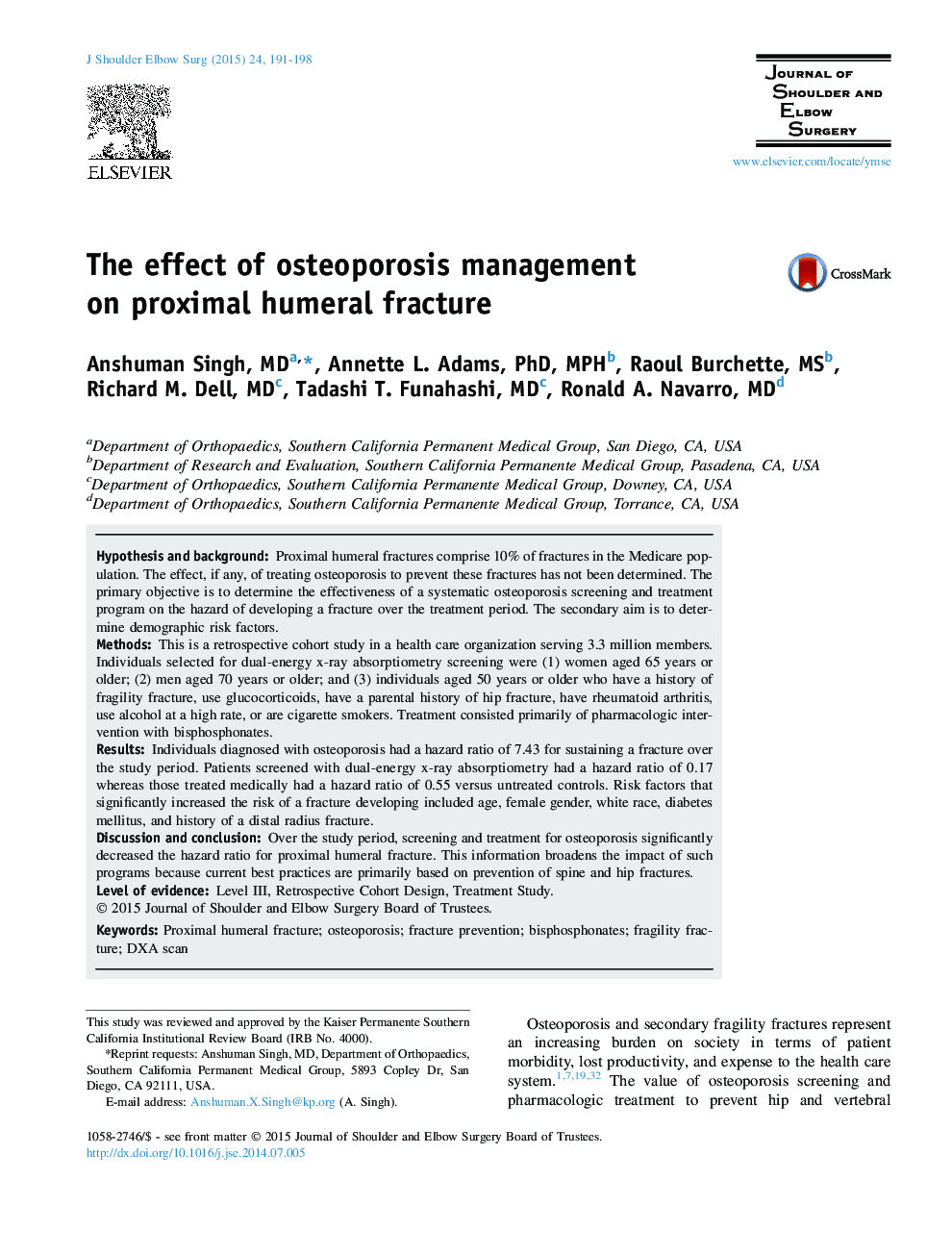| Article ID | Journal | Published Year | Pages | File Type |
|---|---|---|---|---|
| 4073664 | Journal of Shoulder and Elbow Surgery | 2015 | 8 Pages |
Hypothesis and backgroundProximal humeral fractures comprise 10% of fractures in the Medicare population. The effect, if any, of treating osteoporosis to prevent these fractures has not been determined. The primary objective is to determine the effectiveness of a systematic osteoporosis screening and treatment program on the hazard of developing a fracture over the treatment period. The secondary aim is to determine demographic risk factors.MethodsThis is a retrospective cohort study in a health care organization serving 3.3 million members. Individuals selected for dual-energy x-ray absorptiometry screening were (1) women aged 65 years or older; (2) men aged 70 years or older; and (3) individuals aged 50 years or older who have a history of fragility fracture, use glucocorticoids, have a parental history of hip fracture, have rheumatoid arthritis, use alcohol at a high rate, or are cigarette smokers. Treatment consisted primarily of pharmacologic intervention with bisphosphonates.ResultsIndividuals diagnosed with osteoporosis had a hazard ratio of 7.43 for sustaining a fracture over the study period. Patients screened with dual-energy x-ray absorptiometry had a hazard ratio of 0.17 whereas those treated medically had a hazard ratio of 0.55 versus untreated controls. Risk factors that significantly increased the risk of a fracture developing included age, female gender, white race, diabetes mellitus, and history of a distal radius fracture.Discussion and conclusionOver the study period, screening and treatment for osteoporosis significantly decreased the hazard ratio for proximal humeral fracture. This information broadens the impact of such programs because current best practices are primarily based on prevention of spine and hip fractures.
